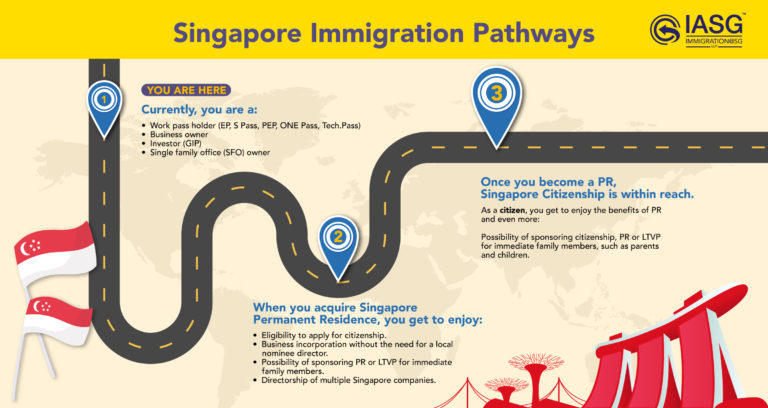Microsoft has recently announced its plans to invest US$2.2 billion to fuel Malaysia’s cloud and AI infrastructure and transformation. Google announced its investment of US$2 billion in Malaysia to boost its data centre and cloud services. Amazon is investing US$6 billion in Malaysia for its cloud infrastructure. What does this mean for Singapore’s tech sector?
Malaysia’s Tech Sector & Future Growth
A. The MyDIGITAL Initiative
Launched in 2021, the MyDIGITAL initiative represents Malaysia’s comprehensive strategy to transform into a digitally-driven, high-income nation by 2030. This initiative is encapsulated in the Malaysia Digital Economy Blueprint, which outlines the country’s vision and strategic objectives to leverage digital technologies across all sectors.
1. Economic Growth
The primary goal of MyDIGITAL is to accelerate economic growth through digital transformation. By enhancing digital infrastructure and capabilities, Malaysia aims to increase the digital economy’s contribution to the GDP from 19.1% in 2019 to 22.6% by 2025.
2. Digital Inclusivity
MyDIGITAL seeks to bridge the digital divide, ensuring that all citizens, regardless of location or socioeconomic status, have access to digital tools and opportunities. This includes expanding internet access to rural and underserved areas.
Industries that would greatly benefit from this include but are not limited to e-commerce and its related services such as transportation and logistics, government services, and even streaming services. Below are some e-commerce projects that have been rolled out:
- Go-eCommerce: A platform providing resources and training for businesses to transition to online sales.
- Digital Free Trade Zone (DFTZ): Facilitating cross-border e-commerce and positioning Malaysia as a regional e-commerce hub.
3. Innovation and Competitiveness
The initiative promotes innovation and enhances the global competitiveness of Malaysian businesses. It encourages the adoption of advanced technologies such as artificial intelligence (AI), blockchain, and the Internet of Things (IoT) to drive productivity and efficiency.
B. Key Components and Strategies
1. Digital Government
Transforming government services to be more efficient, transparent, and citizen-centric is a key focus:
- Online Services: Increasing the availability of government services online, aiming for 80% of government services to be online by 2025.
- eProcurement: Implementing digital procurement systems to enhance transparency and efficiency in government spending.
2. Digital Infrastructure
Investments in robust digital infrastructure are critical to support the digital economy:
- High-Speed Internet: Expanding high-speed broadband access to achieve 100% coverage in populated areas.
- 5G Deployment: Accelerating the rollout of 5G networks to support new technologies and business models.
3. Digital Skills and Talent
Developing a digitally skilled workforce is essential for the success of MyDIGITAL:
- Digital Education: Integrating digital skills training into the national education curriculum, from primary schools to universities.
- Reskilling and Upskilling: Providing continuous learning opportunities for the current workforce to adapt to digital transformations.
4. Digital Businesses
Supporting businesses in their digital transformation journeys:
- Digital Adoption Grants: Providing financial incentives and grants to SMEs to adopt digital technologies.
- Innovation Hubs: Establishing hubs and incubators to foster innovation and support startups in the tech sector.
5. Cybersecurity
Ensuring a secure and resilient digital environment is crucial:
- National Cyber Security Strategy: Implementing a comprehensive strategy to protect digital infrastructure and data.
- Public Awareness: Raising awareness about cybersecurity practices among businesses and citizens.
C. Impact on Society and Economy
The MyDIGITAL initiative is expected to have far-reaching impacts:
- Economic Growth: By enhancing productivity and innovation, the digital economy is set to become a key driver of Malaysia’s economic growth.
- Job Creation: New job opportunities will emerge in digital sectors, while existing jobs will be transformed, requiring new skills.
- Quality of Life: Improved access to digital services will enhance the quality of life, providing greater convenience and opportunities for all citizens.
- Global Competitiveness: Enhanced digital capabilities will position Malaysia as a competitive player in the global economy.
What Does This Mean for Singapore?
Malaysia’s MyDIGITAL initiative is similar to Singapore’s Smart Nation drive, which was launched in 2014. Both countries are leveraging digital transformation to boost economic growth, improve quality of life, and enhance global competitiveness. Here’s a closer look at what Malaysia’s digital ambitions mean for Singapore:
1. Regional Competition and Collaboration
- Healthy Competition: Malaysia’s MyDIGITAL initiative intensifies the competitive landscape in Southeast Asia. As Malaysia ramps up its digital economy efforts, Singapore will need to continue innovating and investing in its own digital infrastructure and capabilities to maintain its leadership position.
- Collaborative Opportunities: The digital strategies of both nations can lead to increased collaboration. Joint initiatives in areas like cybersecurity, fintech, and AI can benefit from shared expertise and resources. Collaborative frameworks can also be established to tackle common challenges, such as cross-border data flows and regional digital trade.
2. Economic and Trade Implications
- Enhanced Trade Relations: As both countries advance their digital economies, there will be more opportunities for digital trade. Singaporean businesses can tap into the growing Malaysian digital market and vice versa, fostering stronger economic ties and mutual growth.
- Investment Flows: Malaysia’s focus on digital transformation may attract more foreign investments, which could complement Singapore’s status as a major investment hub. Investors might see the region as a cohesive digital economy with multiple attractive markets, leading to increased capital flows into both countries.
3. Talent Development and Mobility
- Talent Mobility: The demand for digital skills will rise in both countries, leading to greater mobility of tech talent across the region. Skilled professionals in AI, cybersecurity, and other digital fields might find opportunities in both Singapore and Malaysia, enhancing the regional talent pool.
- Educational Collaborations: Universities and educational institutions in Singapore and Malaysia can collaborate on digital education programs, research, and development. Joint programs and exchange initiatives can help build a robust pipeline of digital talent for both nations.
4. Technological Innovation and Adoption
- Innovation Ecosystems: Both Singapore and Malaysia are building vibrant innovation ecosystems. Startups and tech companies can benefit from operating in a region where multiple countries are prioritising digital growth. This can lead to cross-border partnerships, shared incubators, and regional tech hubs.
- Adoption of Emerging Technologies: The parallel digital transformation efforts will accelerate the adoption of emerging technologies like AI, IoT, and blockchain in the region. This could lead to the development of regional standards and best practices, facilitating smoother technology integration and innovation.
5. Public Service and Citizen Experience
- Improved Public Services: With both countries focusing on digitising government services, citizens can expect more efficient, transparent, and accessible public services. The sharing of best practices and successful models between Singapore and Malaysia can lead to better outcomes for residents in both nations.
- Quality of Life Enhancements: Digital initiatives aimed at smart living, healthcare, and urban mobility will improve the overall quality of life. For instance, Singapore’s experience with smart urban mobility can provide valuable insights for Malaysia’s efforts in this area, leading to more efficient and sustainable city management.
6. Cybersecurity and Digital Trust
- Cybersecurity Collaboration: As digitalisation accelerates, the importance of robust cybersecurity measures grows. Singapore and Malaysia can collaborate on cybersecurity initiatives, sharing knowledge, technologies, and strategies to protect their digital infrastructures.
- Building Digital Trust: Ensuring digital trust through data protection and privacy is critical. Both countries can work together to develop and implement standards that ensure the safe and secure use of digital technologies, fostering trust among their populations and businesses.
Is Singapore’s Tech Sector Going Bust?
No, it is not. While Malaysia’s tech industry is growing, Singapore had a headstart of at least a decade and tech aspirations and goals for each country may be different. Both countries would do well to collaborate to achieve their respective goals as mentioned in this article. Major tech companies are also investing in Singapore – Amazon announced its US$9 billion investment in Singapore to expand its cloud computing infrastructure, Google has been investing in Singapore and has completed its data centre and cloud facilities expansion at a cost of US$5 billion. With Singapore’s goal of growing its quantum computing industry, NVIDIA has announced plans to make Singapore a possible investment destination as well.
It may seem like a competition but Southeast Asia has been the focus of international tech companies to invest in, not just in Singapore and Malaysia. In the midst of an unstable geopolitical environment worldwide, Southeast Asia is a business haven due to its long-standing neutral stance on political issues, thus attracting these tech investments. In fact, Microsoft has announced AI investments of US$1.7 billion in Indonesia. Similarly, Nvidia has announced a US$200 million AI investment in Indonesia as well.
Immigration & Workforce Changes
There have been many tech company restructuring globally and has resulted in thousands of workers being retrenched in Singapore as well. With the new tech investments in neighbouring Malaysia and Indonesia, a lot of tech jobs and employees will move out of Singapore to these countries. Employees who re-skill or specialise in AI would be able to take advantage of the opportunities in Singapore. This is because AI is a technology that is still being developed, improved, and used across various industries.
Industries that use AI in Singapore are healthcare, finance, education, marketing, e-commerce, and more. Foreign tech businesses that would like to tap on AI talent and opportunities in Singapore may set up companies in the country. For enquiries, Whatsapp to +65 8766 1966 or email to info@iasg.com.sg.







